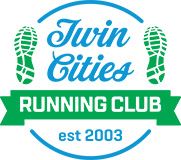| Twin Cities Running ClubA club for beginners and experienced runners alike |
- Home
- Group Runs
- Running Guides
- Safety Guide
Running Safety Tips & Guidelines There are four aspects of running safety: safety for your stuff, environmental safety, traffic safety, and personal safety. All TCRC members should use care and common sense with regard to all of them. Here are some guidelines that apply to all your running. Safety for Your Stuff Break-ins happen, and they've happened to some of our members. It's no fun to return to your vehicle to find that you window is broken and your possessions are missing. A few measures, however, can reduce your risk of a break-in, or soften the results if it does happen:
Environmental Safety Sometimes, things just happen. There are, however, certain things you can do to keep them from happening, or to lessen their impact if they do happen:
Traffic Safety
Personal Safety We don't want to be too alarmist here, but regrettably, if you run outdoors, personal safety can be an issue. Both men and women can be the victim of a crime while on a run, but the risk is greater for women. The following steps, while they won't make you immune from attack, may reduce your risk:
|
